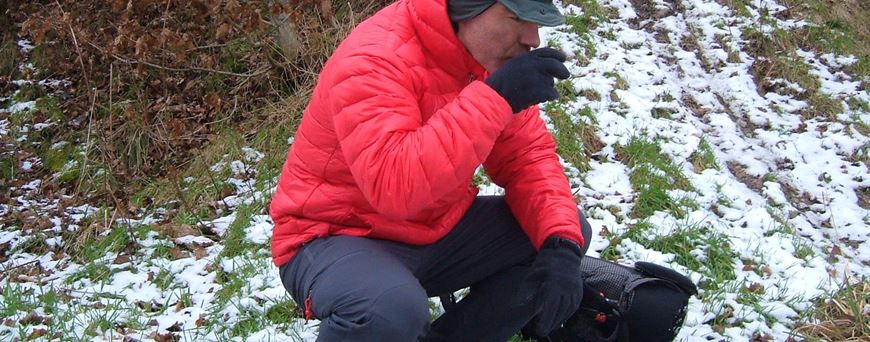This is the first time I have used a hybrid down/synthetic jacket. I have a battered old TNF 650 down jacket and a Rab Alpine Generator synthetic, so I was curious to compare this one against the other two.
The hybrid concept has become more common in recent years with brands such as Berghaus, Arc'teryx, Jack Wolfskin and TNF all launching jackets in this range. The thinking is to try and get the best of down (light and warm) with the best of synthetic (lower cost and performance when wet).
Columbia is a well-established US outdoor firm who have a good pedigree for outdoor clothing and they have gone for a pretty simple design with the Platinum Hooded Jacket. Rather than body mapping or attempting to mesh fabrics, the Columbia jacket takes a very simple layered approach.
It has a simple 30D (denier) Micro Rip-Stop nylon shell and the insulation comes in three parts: an outer layer of 800-fill goose down, Colombia's own synthetic Omni-Heat™ Thermal (60g) which is a polyester-based insulation, and then Omni-Heat™ Reflective Microtex DP, a heat-reflective liner.
In all honesty, my first impressions were pretty mixed. When I hear the word "down", I expect that almost instantaneous warmth that a down jacket generates, when hybrid jackets take a little time to get going.
Also, the hood and pockets took some getting used to and I still have to think before I use them (more of which below).
Colombia describe the fit as 'Modern Classic' and at 5'6" tall with a 40" chest, a medium size was a sleek snug fit for me - extending down over my hips to just above the top of my thighs. It worked best with a heavy baselayer or thin fleece and fitted well under a waterproof jacket (I use a Mountain Equipment Lhotse) when the weather was bad.
I took the jacket out several times on the hill, using it as an additional layer at stops, and also as an outer layer (with a light baselayer) to walk the dog in the snow. The lowest still-air temperature I experienced was -5°C and I was very comfortable.
When the wind picked up (to around 25-30mph at its strongest), the shell material was excellent and I stayed warm. The shell also coped with light rain well, but it isn't designed to be a waterproof and the seams are not taped. I'd describe it as being water resistant.
It wasn't so good at keeping the draughts out. The hood has a light elastic rim with no peak and cannot be adjusted. This means that if it doesn't fit, there are gaps for the wind to get in and the hood won't turn with your head.
Unfortunately for me, either the hood was just too big or my head was just too small! A baseball cap with a stiff peak helped the hood turn with my head but wasn't a perfect solution.
The hood itself is warm and works well to insulate you, as long as it is angled away from the wind. As soon as the wind catches the lip of the hood, a lot of the insulation was lost. The wind occasionally blew down the front of the jacket as well. My Buff helped reduce this, but I did find it annoying.
The pockets are quite low on the jacket and covered by a rucksack's hipbelt, limiting access. Also, they are not particularly deep and have a very shallow lip. Wallets, keys, multi-tools, phones and gloves all fell out at some point.
In the end, I found they were better as hand warmers than for storage. The pockets are between the down and the synthetic layers and are welcomingly toasty for cold hands.
At £150, the Columbia Platinum 860 fits well into the price range for hybrid jackets and compares favourably against offerings from Berghaus (around £200), Jack Wolfskin (around £110) and Eider (around £180).
That said, you have to buy into the concept of hybrid jackets - down and synthetic jackets are well established and have considerable overlap in their use as it stands. So where does the hybrid come in? It certainly adds to the choice for the user and may well be an attractive option for users.
I'd use this jacket as an outerlayer in cold, dry conditions and as a mid-layer if the temperature was going to really drop in bad winter mountaineering conditions.
Given the issues I experienced with the hood, the slightly cheaper (£140) hoodless option would be more attractive for me, but others may find want to go for the hood as well.
Pros
Warm, weather resistant and good looking.
Cons
The hood and the pockets will not be to everyone's taste.
Recommended Use
A great spare layer to use at halts, or just a good outer layer when the temperature drops.












